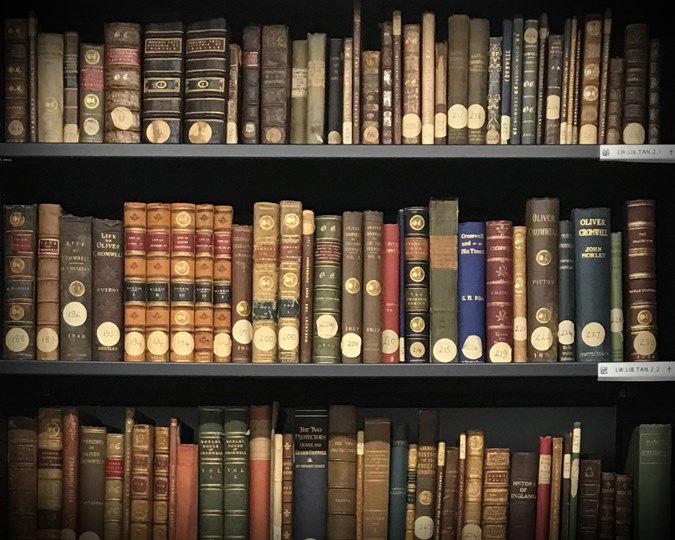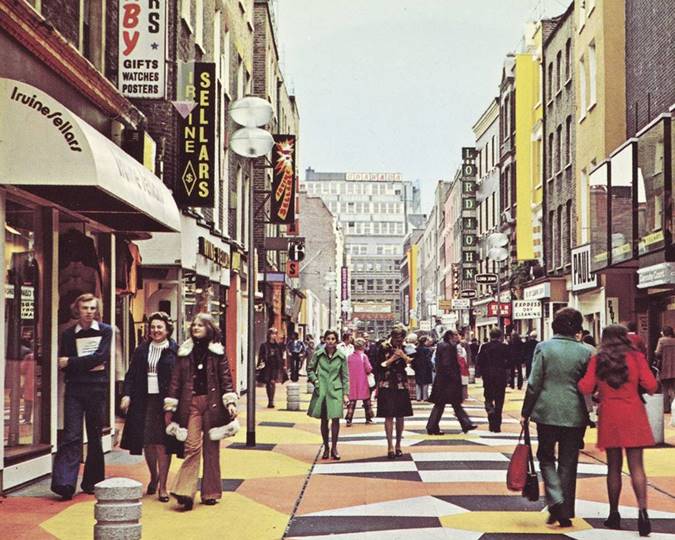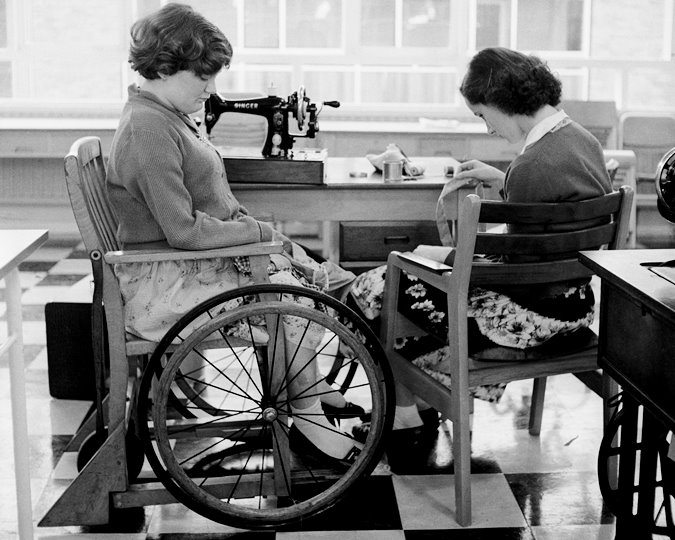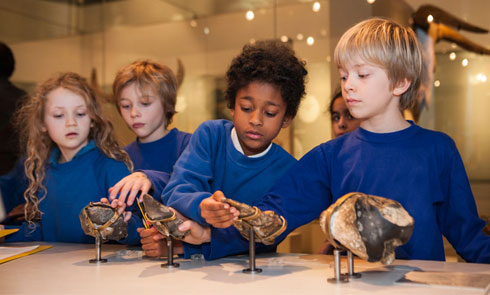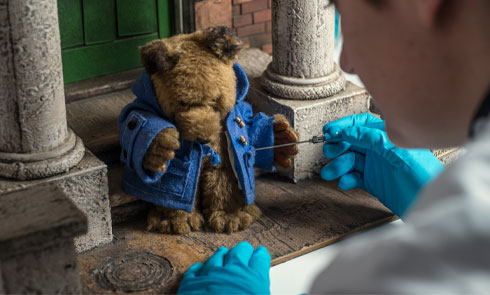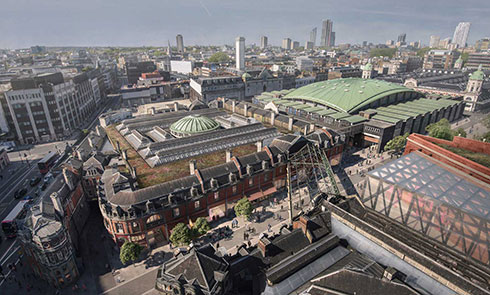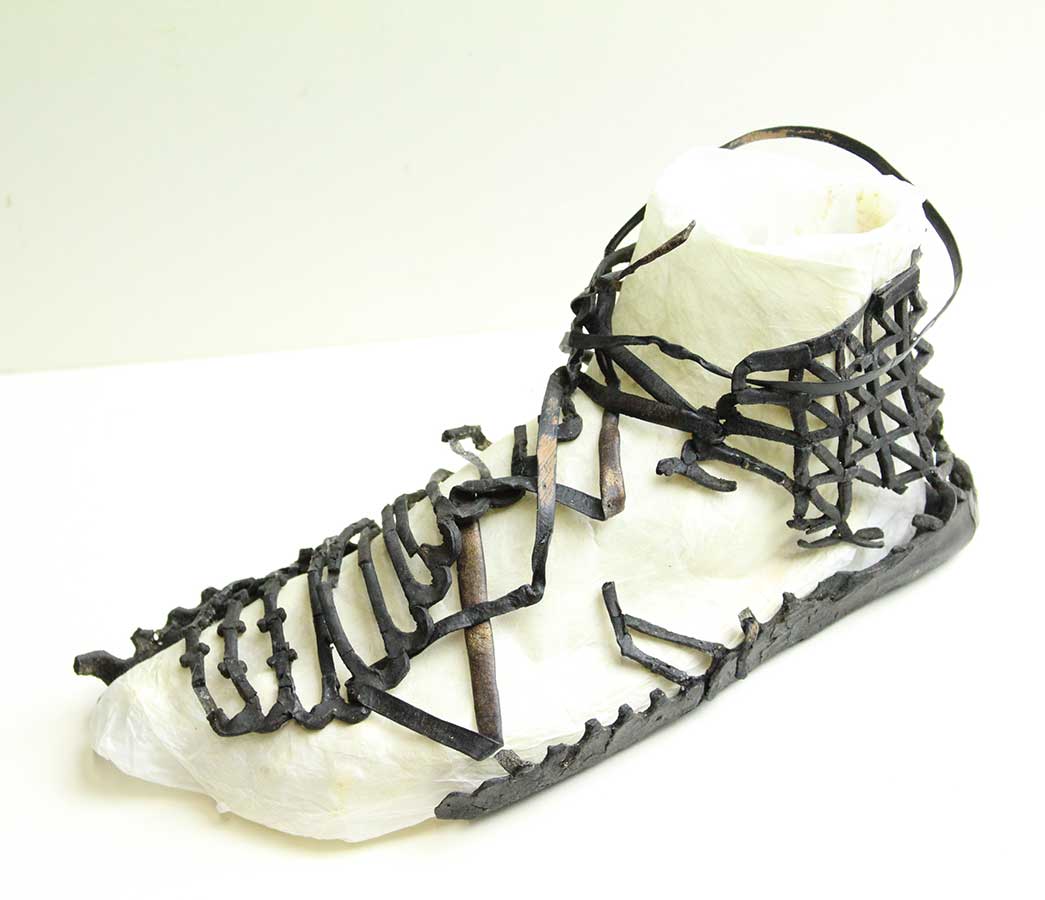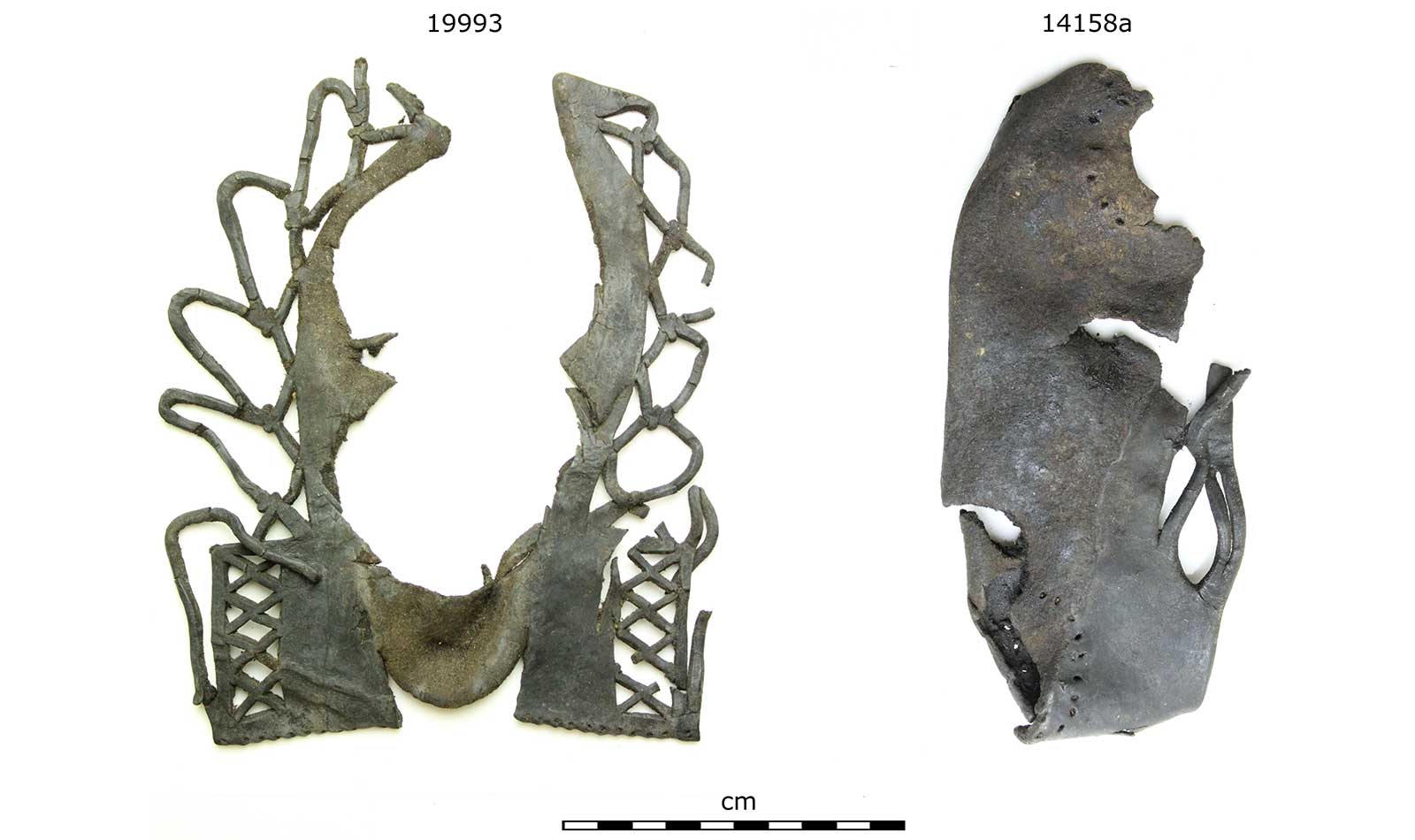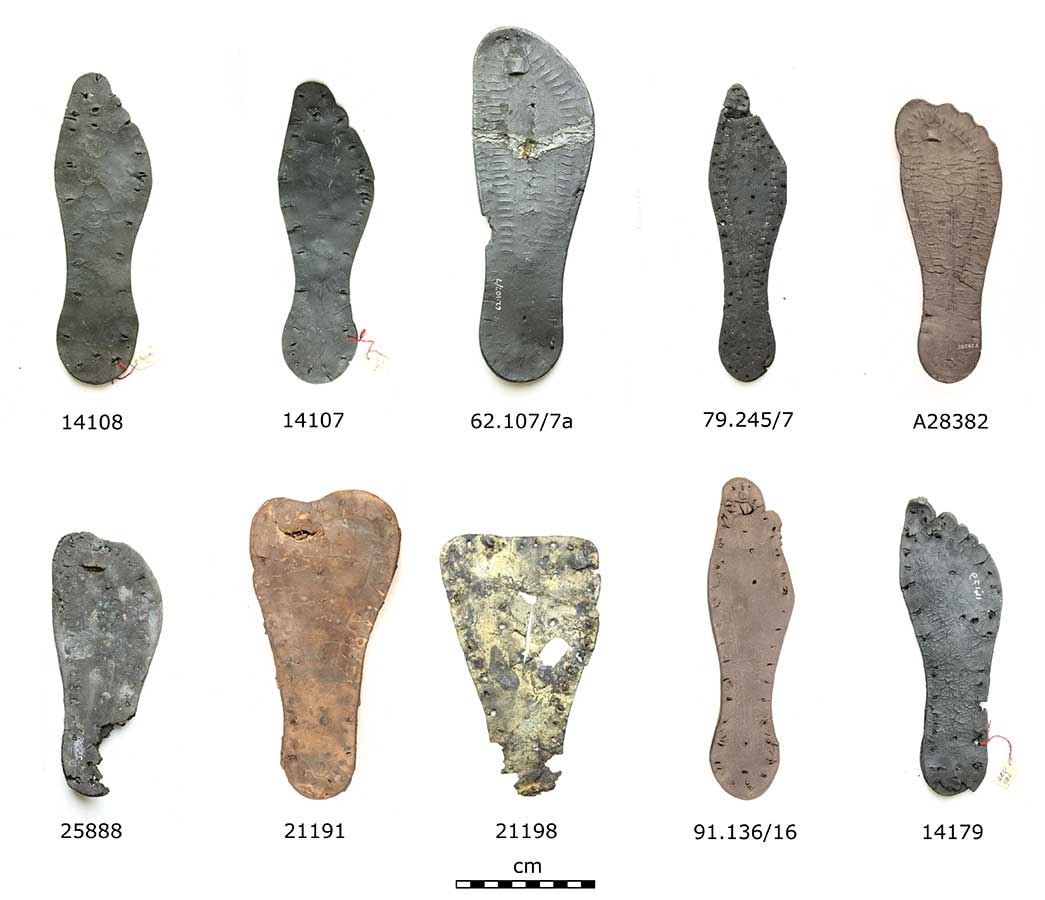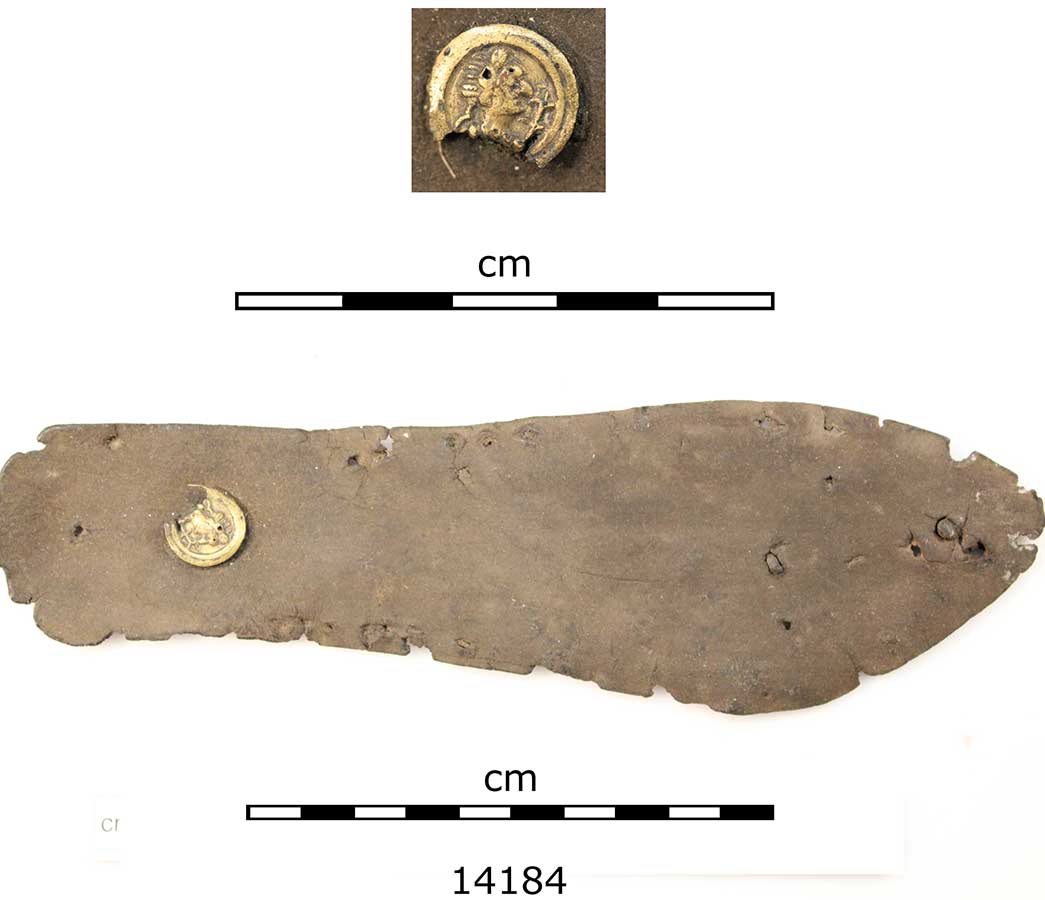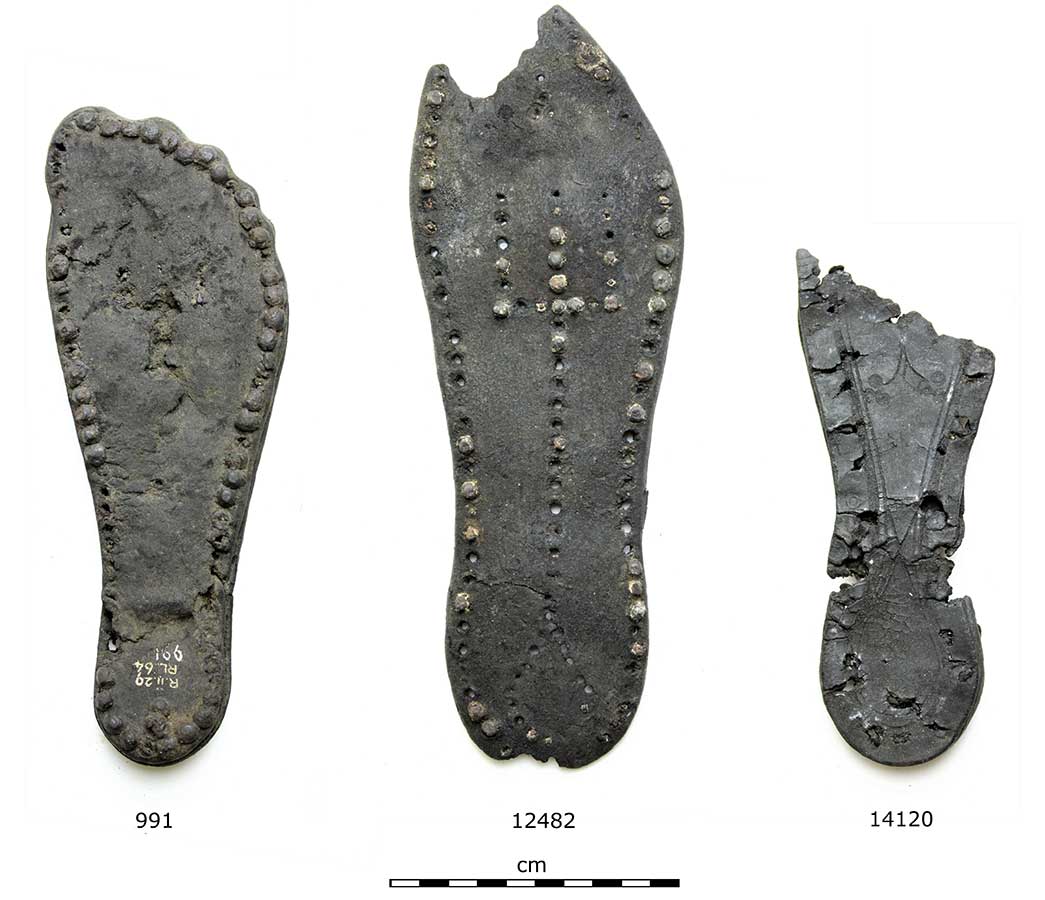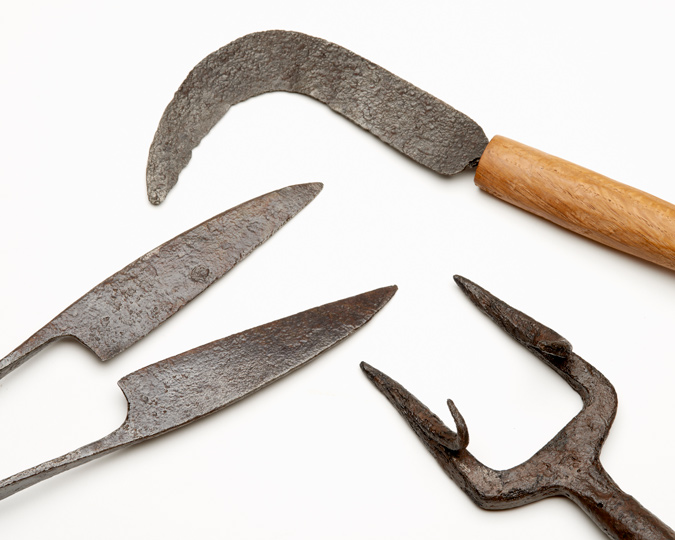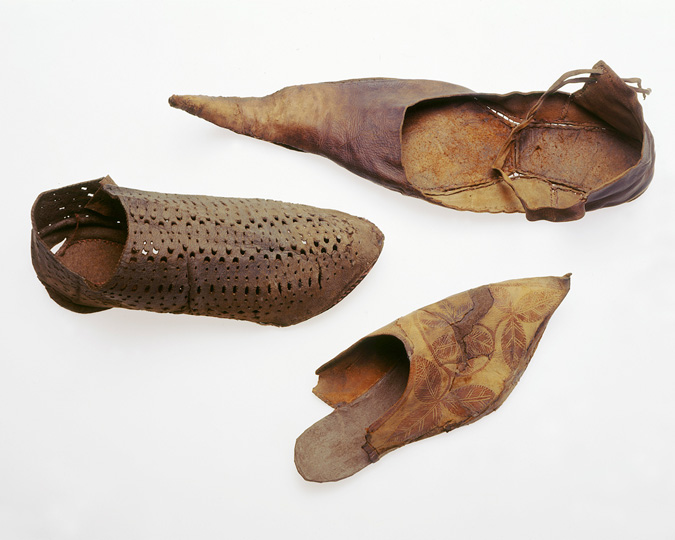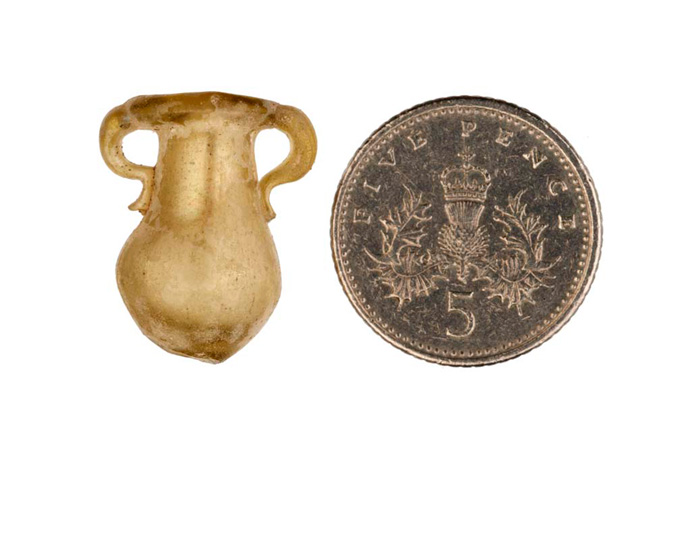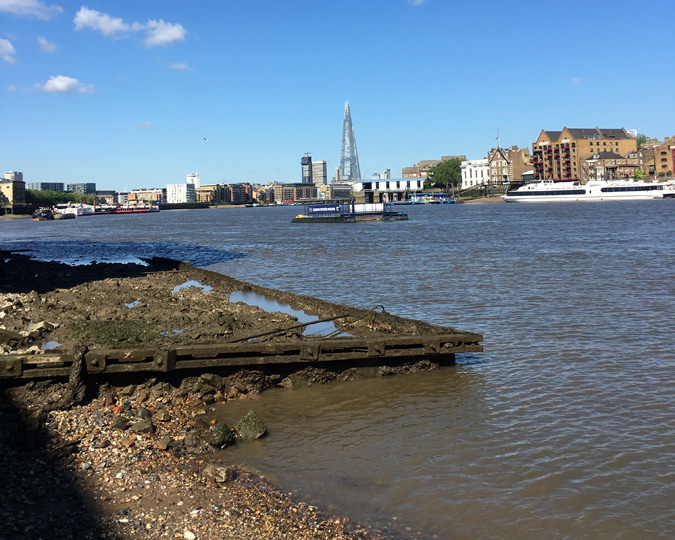London possesses one of the most important collections of Roman leatherwork in the Empire.
Waterlogged conditions on the Thames waterfront and in the Walbrook river valley (recently featured in the Secret Rivers exhibition at Museum of London Docklands) have created the oxygen-free environment needed for the survival of ancient organic artefacts.
Around 3,500 objects have been found, many of them extremely well preserved. However, until recently very little of the Roman leatherwork from London had been studied or published. Recently, a project was undertaken to catalogue and reinterpret around 750 objects in the Museum of London’s collection of material, excavated from the 19th century to the 1970s.
89% of this material is footwear. This is typical of Roman sites, where tough vegetable tanned shoe leather is better preserved than the more fragile leather used in furniture, tents or clothing. The introduction of vegetable tanned leather and the expansion of ironworking were some of the major technological innovations of the Roman period; allowing the mass production of sturdy, hobnailed shoes. As a disposable form of fashion, leather footwear soon became a key part of the growing materialism of the Roman period. London’s Roman leather is therefore a vital resource for studying technological and social change in the period.
A shoe for every occasion
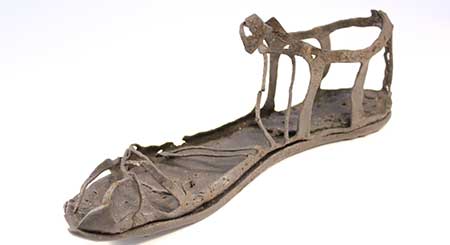
A 1st century caliga from London: 984
Photo by Dr Owen Humphreys, Kingston University London and AHRC
We tend to think of the Romans only wearing their iconic caliga sandals; the robust hobnailed marching shoe of the Roman military. But these shoes weren’t in vogue for very long, going out of style in less than half a century after the conquest of Britain and foundation of Londinium. In their place came a vast array of fashionable footwear.
The simplest are carbatinae; a sort of moccasin-like sandal made from a single piece of cattle hide with a seam up the back, cut into loops and laced over the foot. Despite their simplicity, carbatinae were often decorated with openwork heels and elaborate arrangements of loops.
As they would have worn down quickly, carbatinae may have been used as indoor shoes, and are found mainly in women’s and children’s sizes. Several in the Museum of London have been repaired with extra circles of leather attached to the heel and toe with thonging (known as a clump repair). One of these shoes has had its sole cut apart to make clump patches for another.
One of the strange things about Roman footwear is how the same styles were worn across the Empire; even when they don’t seem suitable for northern climates. For the fashion conscious, sandals were the thing to wear for most of the Roman period. Roman sandals were shaped to resemble feet and toes, and were secured to the foot with a thong between the toes in a similar way to a modern flip-flop. The insoles were often decorated with stamped designs, including occasional astrological symbols.
Sandal styles changed rapidly, indicating the spread of fashion trends across the Empire, from Northern Britain to Egypt. Although initially only worn by women, they were adopted by men in later centuries. These men’s sandals took fashion to the extreme, with toes so wide they would have changed the way you walked.
Even enclosed shoes made little concession to the cold. Boots of this type were worn in Germany, and on Hadrian’s Wall in the far north, but were decorated with elaborate punched designs. Shoes like this were not much good for keeping the cold out, but were perfect for showing off colourful socks.
If the shoe fits…
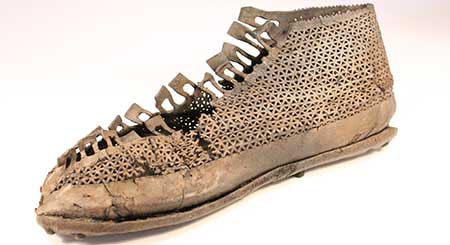
Enclosed boot from London, c.75-125 AD: 20004
Photo by Dr Owen Humphreys, Kingston University London and AHRC
As archaeologists, we’re interested in more than just cataloguing the material we find. We want to use it to explore past places and societies. One of the best things about Roman footwear is the intimate connection to people of the past.
Because of how closely shoes fit the foot, they provide a source of biometric data that is only rivalled by skeletal remains. Individual variation means that we can’t always say with certainty whether an individual shoe was worn by a man, woman or child, but we can safely assume that men’s shoes will be on average larger than those of women and children. By looking at the proportions of shoes of different sizes, we can therefore get a sense of the demographics of a whole site.
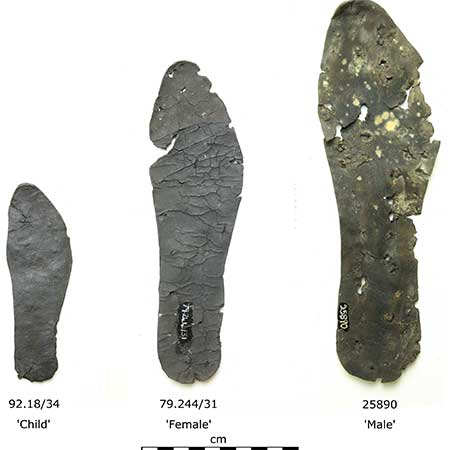
Roman shoe insoles of different sizes from London
Photo by Dr Owen Humphreys, Kingston University London and AHRC
Studying London’s shoes in this way reveals something surprising; women’s and children’s sizes outnumber men’s. Adult men may represent only 22% of the surviving shoes. Other Roman sites (mostly military sites) have a distinct bias towards men. This may reveal differences in the populations of ancient forts and cities. Moreover, the fact that women and children were able to wear shoes may be an indication of their comparatively high social status. In early medieval settlements, or even early modern Scotland, women and children rarely wore shoes.
Shoes have also been modified or manufactured to accommodate health problems which affect the feet. In London, several shoes have hobnails on the inside of the shoe. These may have been uncomfortable, but perhaps they were added because of the belief in the healing properties of metals in the Roman world. One particularly odd example has a copper-alloy stud in the heel bearing an Imperial image. As well as potentially being medicinal, this could be interpreted as an act of private political protest; literally trampling the Emperor under foot.
This isn’t the only instance of personal belief or identity being expressed through footwear. Astrological symbols can be found impressed into sandal insoles, or executed in arrangements of hobnails.
In the early 3rd century, Clement of Alexandria (Paedogogus, Chapter 12) even decried this trend as going too far, lamenting the way young women wrote messages in the hobnails of their sandals, carving ‘amorous embraces’ into the earth as they walked. The women of Roman London do not appear to have embraced this particular fashion, but the high rollers of the city certainly embraced the ‘gold-plated and jewelled mischievous devices of sandals’ which Clement so disliked. Whilst most of the leather we find is black from waterlogging, a few exceptional pieces sparkle with gold leaf.
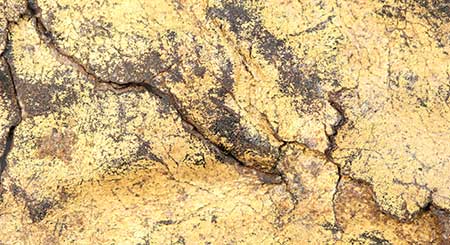
Fragment of gilded sheet leather from London: 18449
Photo by Dr Owen Humphreys, Kingston University London and AHRC
This project on shoes has given us a unique glimpse into the society of Roman London; a place with a distinct urban character, drawing fashion inspiration from across Europe. We see evidence of soldiers, but learn much more about the lives of women and children in the city. Through these objects we can meet people from all walks of life; from those who cut up one pair of shoes to repair another, to those with gilded sandals and colourful socks.
Hear more from Owen on the subject of Roman shoes on: https://www.bbc.co.uk/programmes/m000gcbp, or see more of the Museum of London shoe collection in the episode of London’s Fashion Alphabet with Curator of Roman and Pre-History Jackie Keily:


